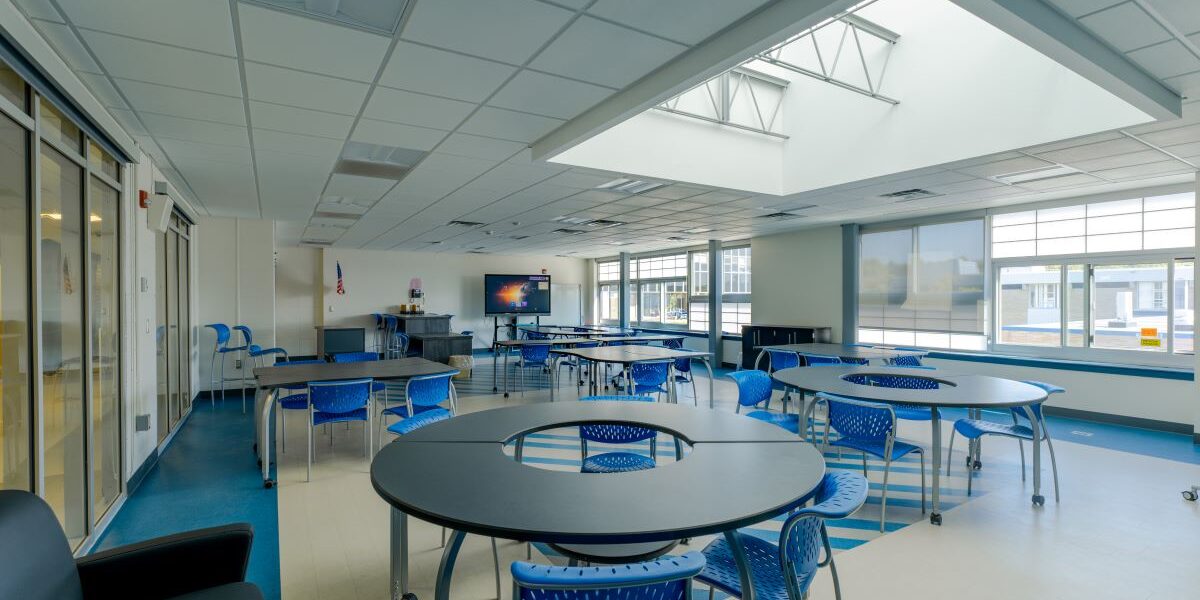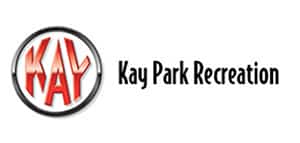By exploring various design strategies and considerations that take sustainability to the next level, K-12 schools can become catalysts for economic growth and academic progress. Forward-thinking designers and educators all play a pivotal role in driving this change.
AMPLIFYING LEARNING POTENTIAL WITH CLEAN INDOOR AIR AND NATURAL LIGHT
Indoor air quality and ample daylight are major factors that shape the learning environment; in addition to minimizing energy consumption, they can have profound impacts on building occupants, positively affecting the following:
Health and Well-Being: Clean air and access to natural light can strengthen physical and mental fortitude by reducing respiratory problems and allergies, boosting mood, abating eye strain and regulating circadian rhythms, leading to heightened alertness and increased attendance.
Cognitive Function: Research indicates that when students and teachers breathe clean air and are exposed to natural light, they experience improvements in their ability to focus, concentrate and retain information, resulting in enhanced academic performance, problem-solving and productivity.
Academic Motivation: Appealing settings captivate students’ attention. Prioritizing indoor air quality and maximizing daylight not only provides mental and physical benefits, but also curates aesthetically pleasing spaces that drive engagement to optimize learning outcomes.
HARNESSING SUSTAINABILITY FOR HANDS-ON LEARNING
Utilizing sustainable school facilities as teaching tools within the curriculum offers a powerful opportunity for students to learn about building science through practical immersion. Key approaches for imparting theoretical knowledge and scaffolding skills include:
Creating Living Laboratories: Sustainable schools often feature “living laboratory” spaces to support STEAM learning. This inspires the exploration of eco-friendly and advanced technologies that harmonize education with environmental stewardship.
Spurring Project-Based Learning: Interdisciplinary courses in architecture, engineering, environmental science and economics—which pull back the curtain on long-term planning for “green” projects, like energy-efficient building construction—enable students to tackle real-world challenges and glean a deeper understanding of sustainable design, all while preparing them for lucrative, high-demand careers.
Sparking Awareness Through Data Collection: Schools equipped with Energy Management Systems (EMS), Indoor Air Quality (IAQ) Sensors or other smart monitoring technology track energy use, indoor air quality and other parameters that empower students to collect, analyze and interpret data, fostering a participatory understanding of sustainability practices.
UNLOCKING ENERGY AND FINANCIAL GAINS
Incorporating sustainable design practices into school construction yields significant financial boons for schools, with upfront costs outweighed by long-term savings. Administrators can save money through sustainable construction by:
Lowering Energy Consumption: Sustainable schools integrate energy-efficient systems and technologies like LED lighting, high-efficiency HVAC systems and smart controls, mitigating energy expenses to align with budgetary restrictions.
Decreasing Maintenance and Operational Costs: Sustainable design features like energy-efficient windows, advanced systems and durable materials cut costly maintenance needs. Additionally, solar panels can generate utility savings and even revenue from surplus energy sales.
Exploring Financial Incentives: Schools can offset sustainable construction expenditures by capitalizing on grants and tax breaks offered by governments and organizations.
REVIVING AGING FACILITIES WITH ADAPTIVE REUSE
Since many schools operate within outdated and resource-intensive buildings, achieving true sustainability often requires adaptive reuse, which fine-tunes them for efficacy, comfort and functionality. The benefits of this approach include:
Environmental Conservation: This pioneering approach safeguards material resources and curtails the carbon footprint associated with new construction.
Heritage Preservation: Repurposing culturally or historically relevant structures for modern education maintains a connection to the community’s past, promoting continuity and pride.
Economic and Community Advantages: Adaptive reuse provides a cost-effective solution for school districts, reducing the need for land acquisition and infrastructure development. This process also invites the community into discussions about the school’s future, alleviating concerns related to demolition while giving everyone a voice in the decision-making process.
Although obtaining LEED certification is commendable in K-12 design, it’s imperative that we surpass this standard to address the distinctive challenges and untapped potential within each classroom.
To do so, we must wholeheartedly embrace the concept of holistic sustainability. This involves continuous education, community engagement, innovation and a long-term vision that empowers schools to evolve into resilient, flexible and inspiring learning environments that stand the test of time.
This information is courtesy of CPL, a 485-person multi-disciplined architecture, engineering and planning firm with 21 offices across seven states, www.CPLteam.com.















